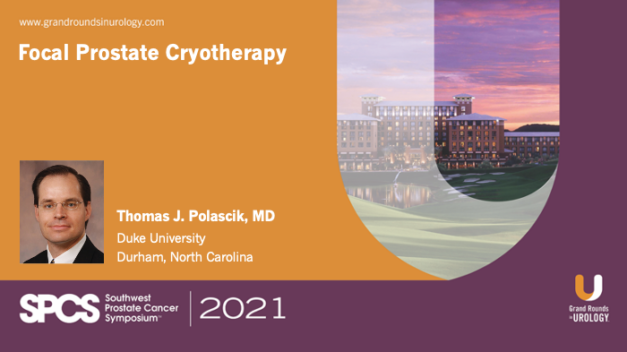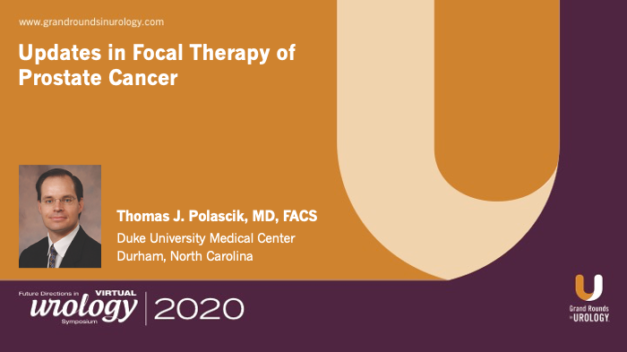Utilization of Focal Therapy for Patients Discontinuing Active Surveillance of Prostate Cancer: Recommendations of an International Delphi Consensus
In this 21-minute presentation, Thomas J. Polascik, MD, FACS, Professor of Surgery at Duke University and Director of Surgical Technology at the Duke Prostate and Urological Cancer Center, posits that patients discontinuing active surveillance (AS) for prostate cancer may be good candidates for focal therapy (FT) rather than radical therapy, describing an international Delphi Consensus on the issue. Eighty-seven percent of respondents agreed that there is a role for FT for men coming off AS, citing the fact that FT is less invasive, has a greater likelihood of preserving both urinary continence and erectile function, comes with fewer side effects, and has an earlier recovery post-treatment as part of the rationale for recommending FT over radical therapy for men discontinuing AS with an imageable, biopsy-confirmed, localized cancer.
Read More


